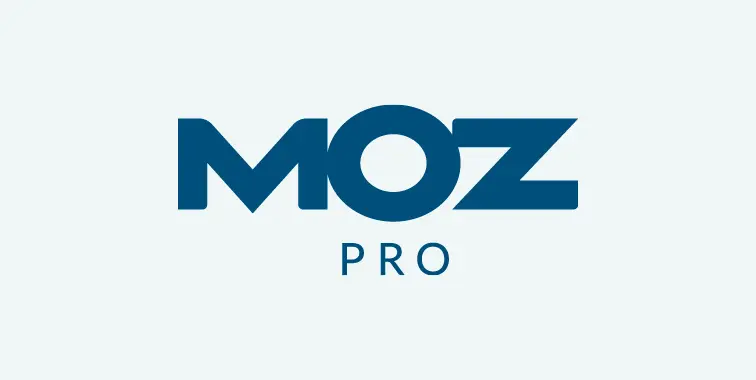This Article has been revised, edited and added to, by Poulomi Chakraborty.
- What is Domain Authority?
- Crafting Quality Content: The Foundation of Link Building
- Guest Blogging: A Two-Way Street
- Utilizing Tech Forums and Communities
- Building Relationships with Tech Influencers and Bloggers
- Utilizing Social Media for Backlink Opportunities
- Leveraging Directories and Resource Pages
- Wrapping it Up
The realm of tech startups is fiercely competitive. With numerous emerging companies vying for the same target audience, domain authority (DA) becomes a distinguishing factor. Building DA through link building can shape the visibility and credibility of a startup. Let’s embark on a comprehensive guide to help tech startups gain an edge in the digital landscape.
What is Domain Authority?

Domain Authority (DA) is not just a metric; it’s a reflection of your startup’s digital footprint in the vast ecosystem of the internet. Developed by Moz, DA serves as a compass guiding your visibility on search engine results pages (SERPs). However, understanding that DA scores, which range from 1 to 100, are not absolute but relative indicators is crucial. They offer insights into how your website stacks up against competitors, rather than an isolated measure of SEO success.
Strategic Importance of DA in a Startup’s Growth Trajectory
For a tech startup, your DA is a beacon signaling your emergence and stance in the competitive landscape. It’s not merely about the number but what it signifies: the strength of your website’s backlink profile, content quality, and user engagement. In the dynamic realm of technology, where innovation and disruption are constants, a robust DA can be your differentiator. It positions your startup not just as a participant but as a contender for leadership in your niche.
Elevating Your DA: A Tactical Approach
Building a Strong Foundation with Comprehensive Keyword Research
Your journey to enhancing DA starts with keyword research. Identify the keywords that your target audience uses in their queries. This step is not about amassing a vast list of terms but about pinpointing the ones that align with your startup’s expertise, products, or services. Utilizing tools like Google Keyword Planner or SEMrush can provide insights into search volumes and competition levels. The strategic selection of keywords sets the stage for content that resonates with your audience and search engines alike.
Crafting Content That Elevates and Engages
Quality content is the cornerstone of improving your DA. This entails creating informative, engaging, and original content that addresses your audience’s needs and questions. However, elevating your content strategy involves integrating your chosen keywords seamlessly, ensuring that your articles, blog posts, and white papers are not only informative but also optimized for search engines. The goal is to craft content that serves dual purposes: engaging your audience and signaling to search engines the relevance and authority of your website.
Leveraging Internal Linking to Sculpt Page Authority
Internal linking is a potent but often underutilized strategy in the quest for higher DA. By strategically linking to your own content, you can guide visitors and search engine crawlers through your website, highlighting the importance of specific pages.
This approach not only improves user experience by providing them with additional valuable information but also helps distribute page authority across your site. The strategic placement of internal links ensures that the value is not concentrated on a few pages but shared, enhancing the overall authority of your domain.
The Role of Backlink Quality Over Quantity
In the pursuit of a higher DA, the focus must be on acquiring high-quality backlinks rather than amassing a large number of low-quality links. Backlinks, or external links from other websites to yours, are a critical factor in determining your DA. They act as endorsements, signaling to search engines the credibility and relevance of your content.
Engaging in guest blogging, collaborating with influencers, and participating in industry forums can be effective ways to secure valuable backlinks. However, the emphasis should always be on the quality of these links. A single backlink from a reputable and relevant site can be far more beneficial than numerous links from lesser-known, irrelevant sites.
Ongoing Optimization and Analysis
Improving your DA is an ongoing process that requires regular monitoring and optimization. Utilize analytics tools to track the performance of your content and backlinks, identifying which strategies are yielding results and where adjustments are needed.
SEO is not a set-it-and-forget-it endeavor; it demands continuous refinement and adaptation to the ever-changing digital landscape. Stay informed about SEO best practices and algorithm updates to ensure that your strategies remain effective and your startup’s DA continues to grow.
By understanding the complexities of Domain Authority and implementing strategic, actionable steps toward improving it, tech startups can significantly enhance their visibility, credibility, and competitive edge in the digital marketplace. The journey to a higher DA is a testament to your startup’s commitment to quality, relevance, and engagement in the tech ecosystem.
Crafting Quality Content: The Foundation of Link Building

In the realm of digital marketing for tech startups, the creation of high-quality content is not merely a task—it’s a strategic endeavor central to the foundational structure of link building. Crafting content that stands out in the digital landscape requires a blend of creativity, expertise, and strategic planning. It’s about designing a content ecosystem that attracts, engages, and retains your target audience, ultimately leading to natural link acquisition and enhanced domain authority.
Developing a Content Strategy That Resonates with Your Audience
Identifying Your Audience’s Pain Points
Understanding your audience is the first step in creating content that resonates. Dive deep into the challenges, questions, and interests of your target market. Utilize tools like social listening platforms, forums, and customer feedback to gather insights. This intelligence not only informs the topics you should cover but also helps in tailoring the tone, style, and format of your content to meet the preferences of your audience.
Creating a Content Calendar for Consistent Engagement
Consistency is key in content creation. Develop a content calendar that outlines what to publish, when, and on which platforms. This calendar should not be rigid but flexible enough to accommodate industry trends, news, and spontaneous content opportunities. Planning ahead ensures a steady stream of content that keeps your audience engaged and fosters a habit of regular visits to your site, increasing the likelihood of content being shared and linked to.
Mastering the Art of Storytelling in Tech
Infusing Innovation and Expertise into Narratives
In the tech industry, where innovation leads the way, incorporating storytelling into your content can differentiate your startup. Narratives that weave together technical expertise with real-world applications or user stories make complex information accessible and relatable. This approach not only demonstrates your knowledge but also showcases the practical value of your technology, making your content more shareable and link-worthy.
Leveraging Multimedia to Enhance Engagement
The integration of multimedia elements—videos, podcasts, infographics—into your content strategy can significantly increase engagement and shareability. Multimedia content often provides a higher value and convenience for users looking for quick, accessible information. By diversifying your content formats, you cater to different learning styles and preferences, broadening your content’s appeal and reach.
SEO Optimization: Beyond Keywords
Understanding User Intent and Semantic Search
SEO is a crucial component of content strategy, but it goes beyond inserting keywords into your articles. Focus on user intent and semantic search to create content that addresses the underlying questions and needs of your audience. This approach ensures that your content is not only discoverable but also valuable and relevant, increasing the likelihood of it being cited as a resource.
Structuring Content for Discoverability and Readability
The structure of your content plays a pivotal role in its discoverability and readability. Use H2, H3, and H4 headings to organize your content logically, making it easier for readers and search engines to digest. Incorporating bullet points, lists, and short paragraphs enhances readability, ensuring that readers stay engaged and are more likely to share and link back to your content.
Amplifying Your Content Through Strategic Distribution
Selective Promotion on Social Media and Industry Platforms
Once you have quality content, strategically promoting it is essential. Identify the social media platforms and industry-specific forums where your target audience is most active. Tailored promotion on these platforms can increase your content’s visibility, drive traffic, and encourage backlinks. Engaging with comments and participating in discussions can further elevate your content’s reach.
Building Partnerships for Content Amplification
Collaborate with influencers, industry experts, and other startups for content promotion and co-creation. These partnerships can extend your content’s reach to new audiences and add credibility to your brand. Co-created content not only diversifies your content portfolio but also opens up new avenues for backlinks and cross-promotion.
In crafting quality content, the aim for tech startups should be to create a compelling, engaging, and informative content ecosystem that naturally attracts backlinks. Through strategic planning, audience understanding, storytelling, SEO optimization, and smart distribution, startups can lay a strong foundation for link building that supports sustainable growth and domain authority enhancement.
Guest Blogging: A Two-Way Street

Guest blogging has evolved from a simple SEO tactic to a sophisticated strategy that serves multiple facets of a startup’s growth, including brand visibility, credibility building, and, of course, link building. For tech startups, leveraging guest blogging requires a nuanced approach that aligns with both their innovative nature and the dynamic digital landscape they operate in.
Crafting a Guest Blogging Strategy That Resonates
Selecting the Right Platforms with Precision
The effectiveness of your guest blogging efforts hinges on the relevance and authority of the platforms you choose. It’s essential to conduct thorough research to identify blogs, industry publications, and digital platforms that not only cater to your target audience but also have a strong domain authority themselves. This selective approach ensures that your content reaches an engaged audience and that the backlinks you gain are of high quality, contributing significantly to your own domain authority.
Proposing Value-Driven Content
Once you’ve identified potential platforms, crafting a pitch that highlights the unique value your content brings to their audience is critical. Your proposal should not only outline the topic but also demonstrate your understanding of their audience’s interests and needs. Including insights into how your content complements their existing content portfolio and addresses gaps or emerging trends can significantly increase your chances of acceptance.
Elevating Your Guest Blogging Content
Showcasing Expertise and Innovation
The content you contribute as a guest blogger should exemplify the cutting-edge nature of your startup. It’s an opportunity to showcase your expertise and thought leadership in your niche. Incorporating case studies, original research, or insights from your startup’s journey can add depth to your content, making it more compelling for the platform’s audience and more likely to be shared and linked to.
Engaging Storytelling Techniques
Engaging your readers with compelling storytelling can transform a standard guest blog post into a memorable piece that resonates with readers long after they’ve finished reading. Use narratives to illustrate complex tech concepts, share successes and challenges, or highlight innovative solutions your startup is bringing to the market. This approach not only makes your content more relatable and engaging but also enhances the likelihood of it being shared across social platforms, increasing its reach and backlink potential.
Strengthening Relationships through Guest Blogging
Building Mutually Beneficial Partnerships
Guest blogging is not a one-and-done activity but a strategic opportunity to build long-term relationships with influencers, thought leaders, and other startups in your industry. Engage with the community around the platform you’re contributing to, respond to comments on your post, and share your guest blog across your channels. This engagement demonstrates your commitment to the community and can open doors to further collaborations, joint ventures, and additional guest blogging opportunities.
Leveraging Analytics for Continuous Improvement
After your guest post is published, closely monitor its performance through analytics tools provided by the host platform or through your own tracking mechanisms. Analyzing metrics such as traffic, engagement, and backlink growth not only provides insights into the effectiveness of your guest blogging strategy but also helps you refine your approach for future posts. Continuous improvement based on data-driven insights ensures that your guest blogging efforts remain aligned with your overall link-building and marketing objectives.
In conclusion, guest blogging represents a strategic avenue for tech startups to amplify their brand, demonstrate thought leadership, and build valuable backlinks. By carefully selecting platforms, crafting value-driven pitches, creating engaging and insightful content, and fostering long-term relationships, startups can maximize the benefits of guest blogging. This multifaceted approach not only enhances domain authority but also positions startups for sustained growth and success in the competitive tech landscape.
Utilizing Tech Forums and Communities

Tech forums and online communities represent a fertile ground for startups to sow the seeds of their digital growth. These platforms, bustling with potential customers, industry peers, and thought leaders, offer a unique channel for establishing authority, engaging with a tech-savvy audience, and strategically building backlinks. Successfully navigating this landscape requires a nuanced understanding of the community dynamics and a commitment to adding genuine value.
Identifying and Engaging with Target Communities
Choosing the Right Platforms for Engagement
Start by identifying which forums and communities are most relevant to your startup’s niche. Whether it’s a general tech forum like Stack Overflow or a niche-specific community on Reddit, the key is to find where conversations about your sector are happening. Engage in these communities not just as a company representative, but as an active, contributing member. This approach helps in understanding the community’s needs, preferences, and the type of content that resonates, allowing for more strategic and relevant contributions.
Authentic Engagement as the Foundation
Once you’ve identified the right platforms, the next step is to engage authentically. Start by answering questions, providing insights, and sharing relevant experiences. Your contributions should aim to solve problems or add valuable perspectives to discussions. This genuine engagement builds your reputation within the community, making any links you share naturally more trusted and likely to be clicked on, shared, or linked to by others.
Crafting Content that Communities Want to Share
Solving Real Problems with Your Contributions
To make your participation in forums and communities more impactful, focus on creating content that addresses the specific problems and questions that arise in these spaces. This could mean writing detailed blog posts that answer common questions or creating tutorials and guides based on the challenges discussed in the forum. When you share this content, it’s seen not as self-promotion but as a valuable resource, significantly increasing the likelihood of it being linked to both within and outside the community.
Utilizing Data and Feedback for Content Creation
Pay close attention to the feedback and questions your contributions receive. This direct input from your target audience is invaluable for tailoring your content strategy. Use this feedback to guide the creation of new content or the update of existing materials, ensuring that your contributions remain highly relevant and valuable to the community.
Nurturing Relationships Within Tech Ecosystems
Establishing Yourself and Your Startup as Thought Leaders
Consistent, valuable participation in tech forums and communities can establish you and your startup as thought leaders in your niche. This reputation makes your content and links more authoritative and worthy of citation. Share your unique insights, experiences, and the latest research from your startup’s work to elevate your standing within the community.
Building Collaborative Opportunities
As you engage and share valuable content, look for opportunities to collaborate with other community members. These collaborations can range from joint research projects to co-hosted webinars or podcasts. Such initiatives not only enrich the community but also create natural contexts for linking to each other’s content, broadening your backlink profile and driving traffic to your site.
Monitoring and Adapting Your Strategy
Analyzing Engagement and Refining Your Approach
Monitor the engagement your contributions receive in these forums and communities, including clicks, upvotes, comments, and mentions. Use this data to refine your engagement strategy, focusing more on the types of contributions that generate the most positive responses. Adapting your strategy based on community feedback ensures that your efforts continue to align with the interests and needs of your target audience.
Staying Ahead of Industry Trends
Stay informed about the latest trends and discussions within your tech niche. This proactive approach enables you to contribute timely and relevant content, positioning your startup as a forward-thinking leader. By aligning your contributions with emerging trends, you increase the likelihood of your content being shared and linked to, further enhancing your domain authority and online presence.
In leveraging tech forums and communities for strategic link building, tech startups can not only enhance their domain authority but also deeply integrate themselves into the fabric of their industry’s digital ecosystem. Through thoughtful engagement, valuable content creation, relationship building, and continuous strategy refinement, startups can unlock the full potential of these platforms for sustainable digital growth.

Related: Check out our free SEO suite

Building Relationships with Tech Influencers and Bloggers
In the bustling digital ecosystem, tech startups must navigate the terrain of influencer and blogger relationships with precision and strategy. Identifying the right influencers and bloggers who align with your startup’s vision, values, and target audience is the cornerstone of this endeavor. This process goes beyond merely assessing follower counts or blog traffic metrics; it requires a deep dive into the quality of engagement, the relevance of content, and the authenticity of the influencer or blogger’s connection with their audience.
Crafting a Relationship-Building Strategy
Personalized Outreach for Genuine Connections
Once potential influencers and bloggers have been identified, crafting personalized outreach messages becomes crucial. These messages should not only introduce your startup and its offerings but also articulate how a partnership could provide mutual value. Highlight specific posts, articles, or campaigns that demonstrate your familiarity with their work and suggest clear, tailored ways your startup could add value to their content or audience.
Offering Value Beyond the Usual
To stand out and forge meaningful relationships, offer influencers and bloggers something beyond the standard fare. This could involve exclusive access to your products or services, opportunities to co-create content that showcases their expertise in new ways, or invitations to participate in events that elevate their profile within the tech community. Demonstrating that you’ve thought about what’s in it for them, beyond just another sponsorship, can set the groundwork for a lasting partnership.
Elevating Collaborations to Foster Mutual Growth
Engaging in Creative Co-Content Creation
Collaborating with influencers and bloggers on content creation offers a unique opportunity to tap into their creativity and audience insights. Whether it’s a joint webinar, podcast, or a series of guest blog posts, these collaborations should be designed to highlight each party’s strengths and provide value to audiences on both sides. Planning and executing these projects with a focus on quality and innovation can enhance your startup’s visibility and credibility, as well as strengthen the backlink profile.
Leveraging Events for Deeper Engagement
Organizing events, whether online or in-person, and inviting influencers and bloggers to participate can significantly deepen relationships. These events can range from product launches to industry roundtables or panel discussions on topics of mutual interest. Providing a platform for influencers and bloggers to showcase their expertise not only enriches the event but also fosters a sense of partnership and community that goes beyond transactional interactions.
Sustaining Relationships Through Continuous Engagement
Keeping the Conversation Going
Building and maintaining relationships with influencers and bloggers is an ongoing process. Regular check-ins, sharing of relevant content, and offering support for their initiatives help keep the conversation going. This continuous engagement demonstrates your genuine interest in their work and helps keep your startup top of mind for future collaborations or when they’re seeking expert sources for their content.
Measuring Impact and Adapting Strategies
To ensure that collaborations with influencers and bloggers are meeting your startup’s link-building and brand-building objectives, it’s important to measure the impact of these partnerships. Analyze metrics such as traffic referrals, engagement rates, and the quality of backlinks generated from collaborations. Use these insights to refine your approach, identifying what works best for engaging with influencers and bloggers and adjusting your strategy accordingly.
In forging relationships with tech influencers and bloggers, startups can unlock powerful avenues for building domain authority, enhancing brand visibility, and driving meaningful engagement with their target audiences. By approaching these relationships with a strategy that emphasizes personalization, value, creativity, and continuous engagement, startups can cultivate partnerships that contribute significantly to their long-term growth and success in the digital landscape.
Utilizing Social Media for Backlink Opportunities

In today’s digital age, social media platforms are not just channels for networking and engagement but also potent tools for enhancing your startup’s SEO strategy through strategic backlinking. Developing a social media strategy that aligns with your SEO goals involves understanding how these platforms can influence your link-building efforts, even if most social media links are “nofollow” and do not directly affect your site’s rankings in search engines.
Elevating Brand Visibility to Encourage Organic Backlinks
Creating Share-Worthy Content
The cornerstone of leveraging social media for backlink opportunities is creating content that users are compelled to share. This content must not only resonate with your audience but also provide value in such a way that it encourages sharing and, indirectly, the creation of backlinks. Whether it’s insightful blog posts, innovative infographics, or engaging videos, the content should highlight your startup’s unique perspective and expertise in the tech industry.
Optimizing Social Profiles for Maximum Impact
Your social media profiles are often the first point of contact between your startup and potential followers or customers. Ensure that these profiles are fully optimized with up-to-date information about your company, including a clear and concise bio, a link to your website, and branding that aligns with your overall digital presence. An optimized profile increases the likelihood of driving traffic to your site and earning backlinks.
Engaging with Your Audience to Build Relationships
Responding to Comments and Messages
Active engagement on social media involves more than just posting content. Responding to comments, messages, and mentions demonstrates that your startup values its community’s input and is eager to engage in conversations. This level of interaction not only fosters a loyal community but also encourages users to share your content and mention your brand, indirectly creating opportunities for backlinks.
Leveraging User-Generated Content
Encourage your followers to share their own content related to your brand, whether it’s through reviews, testimonials, or creative uses of your products. User-generated content not only adds authenticity to your brand but also increases your content’s reach and potential for backlinks as it gets shared across the users’ networks.
Utilizing Social Media to Amplify Influencer Collaborations
Partnering with Influencers for Broader Reach
Collaborating with influencers who align with your startup’s values and audience can significantly amplify your content’s reach on social media. These collaborations can range from sponsored posts to co-hosted live streams or Q&A sessions. Influencer partnerships can drive their followers to your website, increasing the likelihood of earning backlinks from various sources influenced by the influencer’s content.
Creating Campaigns That Encourage Sharing and Linking
Design social media campaigns that encourage participation and sharing, such as contests, hashtag campaigns, or interactive polls. These campaigns can virally spread your content, increasing its visibility across social platforms and the web, leading to increased backlinks as users share your content within their networks and on their own websites or blogs.
Monitoring and Analyzing Social Media Performance
Tracking Engagement and Referral Traffic
To understand the impact of your social media efforts on your backlink strategy, track engagement metrics and referral traffic from social platforms to your website. Tools like Google Analytics can help identify which social media activities are driving traffic and potential backlinks, allowing you to refine your strategy for even better results.
Adapting Your Strategy Based on Insights
Use the insights gained from monitoring your social media performance to adapt and evolve your strategy. Focus on the types of content and engagement tactics that drive the most valuable interactions and backlinks, and consider experimenting with new platforms or content formats to expand your reach.
By strategically leveraging social media, tech startups can not only enhance their brand’s visibility and engagement but also indirectly create valuable backlink opportunities. Through creating share-worthy content, engaging with audiences, amplifying influencer collaborations, and continuously monitoring performance, startups can harness the power of social media to support their link-building and SEO objectives.
Leveraging Directories and Resource Pages

In the intricate web of SEO and link building, directories and resource pages hold a unique position. While often overlooked, these platforms can serve as pivotal touchpoints for tech startups looking to enhance their online presence and domain authority. A strategic approach to leveraging these resources can not only drive targeted traffic to your website but also significantly bolster your backlink profile.
Selecting High-Quality Directories and Resource Pages
Criteria for Directory Selection
The first step in this strategy involves identifying directories and resource pages that are not only reputable but also relevant to your startup’s industry niche. The quality of the directory or resource page is paramount; it should be well-curated, regularly updated, and host to a community of reputable websites. Prioritize directories that are specific to the tech industry or even more narrowly focused on your startup’s particular sector within tech.
Assessing the Value of Potential Listings
Before committing to a directory or resource page, assess its potential value to your link-building efforts. Look for indicators such as the site’s domain authority, its traffic levels, and the relevance of its audience to your startup. Tools like Moz’s Domain SEO Analysis Tool can provide valuable insights into these metrics, helping you make informed decisions about where to list your startup.
Crafting Compelling Listings
Developing Engaging and Informative Descriptions
Once you have identified the right directories and resource pages, the next step is to craft listings that stand out. Your directory listing is more than just a place to drop a link; it’s an opportunity to introduce your startup to a new audience. Create engaging and informative descriptions that highlight what sets your startup apart, focusing on unique value propositions and the problems your technology solves.
Optimizing Listings for Search Engines and Users
In addition to being compelling, your listings must be optimized for search engines. Include relevant keywords naturally in your description, but always prioritize readability and value for the user. Ensure that your business name, address, and phone number (NAP) are consistent across all listings to enhance local SEO efforts and avoid confusing potential customers.
Engaging with Directory and Resource Page Communities
Beyond the Listing: Contributing to the Community
Engagement should not stop at the listing. Many directories and resource pages have forums, comment sections, or opportunities to contribute content. Actively participating in these communities can elevate your startup’s profile within the directory, leading to increased visibility and potentially more direct traffic and backlinks. This engagement also demonstrates your commitment to the community, fostering goodwill that can translate into stronger connections and more robust link-building opportunities.
Monitoring and Responding to Reviews
For directories that include customer reviews, actively monitor and respond to feedback about your startup. This not only shows that you value customer input but also enhances your reputation within the directory. Positive reviews can boost your visibility in the directory and encourage others to link to your site, both directly and indirectly.
Regularly Reviewing and Refreshing Your Listings
Keeping Information Up-to-Date
The digital landscape is constantly evolving, and so too should your directory listings. Regularly review your listings to ensure that all information is current and reflects any changes in your startup, such as new product offerings or changes in your business address or contact information. Keeping your listings fresh and up-to-date is crucial for maintaining their value as a link-building tool.
Evaluating the Performance of Directory Listings
Finally, continuously evaluate the performance of your directory listings. Use analytics to track traffic and backlinks generated from each directory and assess their contribution to your overall SEO strategy. This ongoing evaluation will help you fine-tune your approach, focusing your efforts on the directories and resource pages that offer the most significant benefits to your startup’s online presence and domain authority.
By strategically leveraging directories and resource pages, tech startups can significantly enhance their visibility, domain authority, and SEO success. Through careful selection, compelling listings, active community engagement, and continuous evaluation, startups can maximize the value of these platforms as part of a comprehensive link-building strategy.
Wrapping it Up
Link building, especially in the dynamic tech startup landscape, is not just about acquiring backlinks but about establishing relationships, showcasing expertise, and fostering trust within the industry. By integrating the methods and strategies detailed above, tech startups can pave their way towards increased domain authority, improved search engine visibility, and a stronger online presence.
Remember, the key to successful link building is patience, consistency, and genuine efforts towards adding value to the broader online community. As with all SEO strategies, results from link building take time, but the benefits – from increased organic traffic to stronger brand recognition – are well worth the investment. So gear up, and start building those invaluable links for your tech startup today!
Read Next:





















